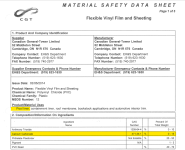Hello!
The key understanding with calcium in relation to pool surfaces is that water naturally wants to find equilibrium. If your water is low in calcium, it will tend to pull calcium from the pool surface. In the case of plaster or concrete pools, this can cause damage to the surface. However, with vinyl-lined pools, there's no calcium in the vinyl, so there’s nothing for the water to "pull" from.
The reason the TFP method has such a broad range is that for vinyl pools, a vast majority of calcium hardness values work without causing issues. Levels below 50 can increase the chance of metal staining (mainly on fiberglass steps), and very high levels could lead to calcium scaling, but both of these situations are relatively rare, especially in vinyl pools.
In short, there's no need for you to add a calcium hardness increaser in a vinyl pool based on the numbers you've provided. The TFP method is about providing a safe, efficient range that works for most pools without causing unnecessary concern or leading to additional chemical costs.
Hope this clarifies things!









